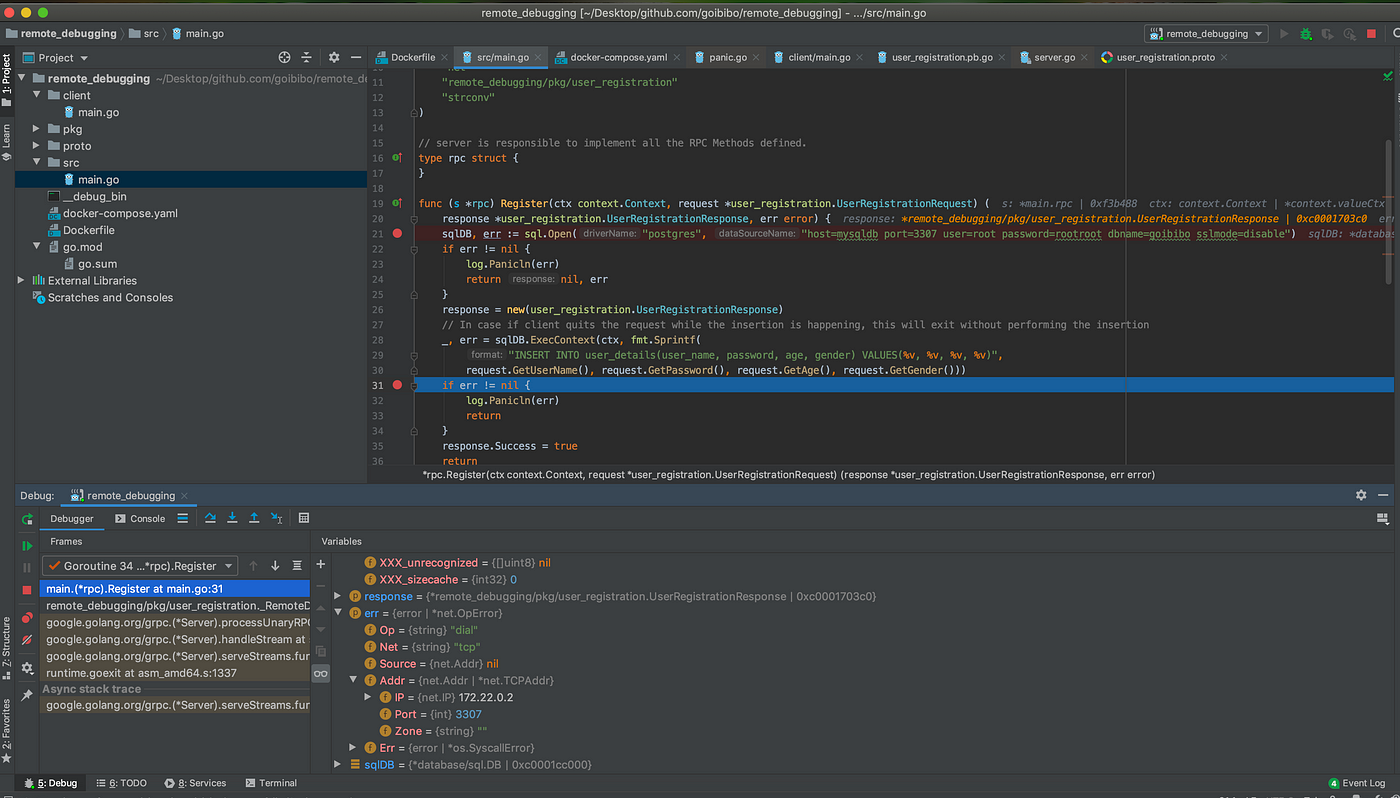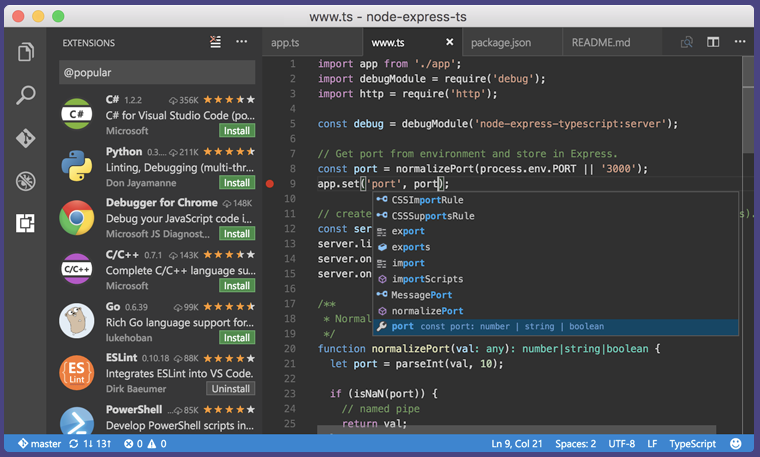

Your application should be built with the -gcflags='all=-N -l' flag toĭisable optimizations and inlining. GOTRACEBACK=single is the default setting for Go, so you can add thisĮnvironment variable without changing behavior. Unless you built your container image using ko, set one of the standard GoĮnvironment variables to allow Skaffold to detect your container as Go. GODEBUG, GOGC, GOMAXPROCS, or GOTRACEBACK, or Standard Go runtime environment variables: Go-based container images are recognized by: The remotePath or to properties should be set to the absolute path of the The cwd or from properties should be the absolute path of the top-levelĭirectory of your source files and should generally match the artifact’sĬontext directory in skaffold.yaml. If you use the debug functionality of theĭlv, you may need to configure local and remote source paths, viaĮither the cwd and remotePath properties, or the substitutePath array
GOLAND REMOTE DEBUG CODE
Skaffold debug using the VS Code Go extension Errors likeĬannot find debugger path indicate misconfiguration. The IDE settings must also be explicitly configured to use Go Modules. Skaffold debug using the JetBrains GoLand and IntelliJ Ultimateĭebugging is only supported in JetBrains IDEs for Go applications built using Go Modules. On recognizing a Go-based container image, debug rewrites the container image’sĮntrypoint to invoke your application using dlv: dlv exec -headless -continue -accept-multiclient -listen=:56268 -api-version=2. Go-based applications are configured to run under We are looking for ways to identify this information and to pass it back if found. Note that many debuggers may require additional information for the location of source files.

GOLAND REMOTE DEBUG HOW TO
This section describes how Skaffold configures the container image for debugging for the supported language runtimes, and how to setup with certain IDEs. Detailed debugger configuration and setup Cloud Code will automatically configure container images for debugging so you can debug Kubernetes services just like how you would debug a local service in your IDE.įor more information, see the corresponding documentation for VS Code, IntelliJ and Cloud Shell. The easiest way to debug using Skaffold is by using the Cloud Code IDE extension for Visual Studio Code, JetBrains IDEs, and Cloud Shell. However if you encounter difficulties then checkout the Supported Language Runtimes section for the exact heuristics that skaffold uses and you can modify your application accordingly. Skaffold can usually detect the correct language runtime if present. NET Core (runtime ID: netcore) using vsdbg Python 3.5+ (runtime ID: python) using debugpy (Debug Adapter Protocol) or pydevd.Java and JVM languages (runtime ID: jvm) using JDWP.NodeJS (runtime ID: nodejs) using the NodeJS Inspector (Chrome DevTools).Skaffold does this by detecting the runtime of your project and transparently configuring the containers in pods for debugging against that framework.ĭebugging is currently supported for five language runtimes. Skaffold lets you debug your application running on a local or remote Kubernetes cluster, almost exactly how you would do it if the code were running locally on your machine.


 0 kommentar(er)
0 kommentar(er)
